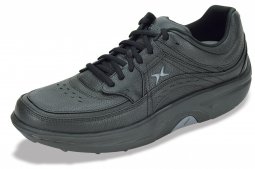Diabetics is a diseased caused by insufficient insulin production in the body or the produced insulin being insufficient to do its job. Insulin is produced in an organ named pancreas in out body and its main task is to transform the nutrition we take into energy.
Diabetes, which is diagnosed in 16 million new people in United States of America every year, has two types called Type 1 and Type 2. Type 1 diabetes is the type that genetic transfer is frequently seen, occurs in earlier ages and is insulin dependent. Whereas Type 2 diabetes is the form that occurs after middle ages, on individuals that have excess body weight, unregulated blood sugar, and who doesn’t care for their diet.
Diabetes patients are usually treated by physicians because of the damaging of various organs and tissue groups due to complications of this disorder. These complications which have blood circulation disorders at their base, can cause severe problems in eyes, kidneys and especially in legs and feet.
Neuropathy (Nerve Tissue Disorder)
Almost one fourth of the patients who are diagnosed with diabetes have foot problems caused by this disease. These disorders are caused by blood circulation disorder and damaging of nerve tissue. Diabetic neuropathy causes conditions such as numbness in feet, pain, not feeling cold or heat. This patients don’t notice small cuts, burns, bruises occurring on their feet and the problem quickly becomes huge. Late diagnosis can cause adverse conditions such as non-healing wounds, insufficiency in treatment and limb loss. Neuropathy can also cause bunion, claw toe, and Charcot Disease and such conditions that are accompanied by bone fractures. Timely measures for diabetes patients can prevent these adverse conditions. Daily care of feet are the most important point.
Blood Circulation Disorder
One of the most serious complications of diabetes is peripheral vein disorder, in other words blood flowing through the capillary vessels slowing down or even stopping.
As a results, the amount of oxygen and structural blocks carried to the tissues is lowered and especially the wounds caused by neuropathy becomes impossible to heal. Also foot skin dries and oedema occurs in feet.
Treatment and Prevention
Choice of shoe and use of some orthopaedic care products is significantly important for diabetic foot care. For this purpose, products produced from a material called plastasot should be used, the aim here is to protect the feet from impacts. Plastasot, responds to factors such as excess pressure and heat and protects the feet. It is advised for shoes to have the following specifications.
Having wide area for where the fingers go.
The soles being changeable for care products to be able to be placed when necessary.
Sole of the shoe having a shape similar to ellipse and balancing the load distribution.
Heel part being solid and grasping.
Foot Care and Diabetes

Diabetes patients are prone to serious foot problems developing due to reasons such as loss of feeling, change of shape, foot wounds. To prevent all these problems daily foot care is necessary and the following specifications should be especially cared for.
Following your physician’s advice, keep your blood sugar on a normal level.
Examine yourself everyday, checking your feet for cuts, swelling, ingrown toenail, red points and such disorders. Consult a physician for every wound, hydrocele etc that takes more than one day to heal.
Wash your feet with warm water every day. It should not be hot water and feet should not stay wet after washing, should be dried immediately. You should not forget about drying between the fingers. Talcum powder can be used to keep area between the fingers dry.
Take care to keep your feet skin soft with daily applied moisturiser lotions. Don’t put the lotion between the fingers.
Always wear shoes and socks. Even at home take care to not stay with naked feet. Choose socks made from wetness absorbing cloths, without seams. Check your shoes for any foreign objects in them before wearing them. Take care that your shoes are wide and comfortable.
Keep your feet away from the sun at summer, and even put on protective lotions. In winter, especially if your feet get cold at nights, don’t put warm bottle or such on top of you feet, wear socks.
Especially when you are sitting for a long period of time, keep your feet up. Move your fingers for 2-3 minutes from time to time. Move your ankles up and down to support blood circulation. Don’t cross your legs for long periods of time, don’t wear socks with tight bands, don’t wear tight shoes... Most importantly do not smoke... Smoking critically slows the blood circulation in feet.
Exercise and be active. Walking, cycling, swimming and dancing are beneficial exercises for feet health. Avoid activities that put pressure on feet such as jumping. Allow you body to warm up and cool down before and after the exercise.
Go through physical examination at least once per year and check your feet’s feeling and blood circulation.

